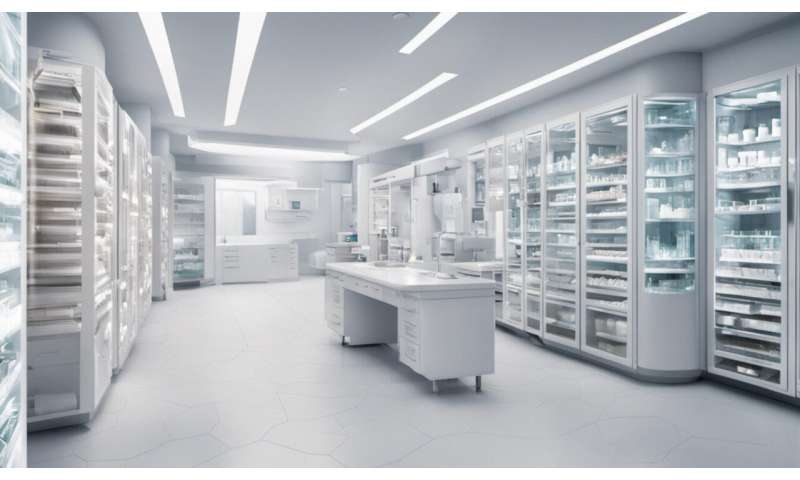How clean is your hospital room? To reduce the spread of infections, it could probably be cleaner


Imagine you need to go into hospital. First, you are likely to be seen in the emergency department, and then moved to a ward room for further treatment and recovery.
Unknown to you, the last patient in your room had an infection caused by a multi-drug resistant pathogen (bug) – meaning the standard antibiotics can’t fight it.
Unfortunately, research suggests if you are admitted to a room where the last patient had this kind of infection, you are significantly more likely to be infected by that same pathogen than if you were admitted to a room where the last patient wasn’t infected.
The consequences of a hospital infection can be serious, including a much longer stay in hospital and even death.
However, transferring the pathogen from patient to room to patient is less likely when the room is thoroughly cleaned.
All Australian hospitals employ cleaning staff who play an important role in patient safety. But some of this cleaning could be more effective.
Our research team developed a “bundle” of evidence-based hospital cleaning initiatives, and trialled this across 11 Australian hospitals.
We found it reduced the incidence of hospital-acquired infections. And in a paper recently published, we estimate implementing this bundle across the 11 hospitals saved more than A$1 million in health-care costs.
Reducing infection risk
Infections during a hospital stay affect one in ten patients. Hospital staff are aware of the dangers of infections, and reduce the risks by keeping their hands clean.
But staff and visitors can still transfer pathogens to patients, because these pathogens can remain dormant (but still alive) on surfaces for a long time. Some pathogens can survive in hospitals for days, or even months.
We can break the cycle of infection by creating cleaner hospitals with fewer dormant pathogens.
Hospital-grade cleaning products kill or remove common pathogens. But the product used is just one element of cleaning—the right technique is also important. Technique includes using the product according to the instructions, not contaminating already clean areas, using sufficient pressure to clean, and cleaning in the right spots.
Frequently touched surfaces such as light switches, emergency call-bells and bed rails are commonly contaminated with pathogens. These surfaces require extra cleaning.
How frequently cleaning needs to occur in hospitals and the best methods to use are disputed. Decisions are complicated because you can’t see the bugs with the naked eye.
In Australia, there is considerable variation in approaches to hospital cleaning including in the use of cleaning products, the type of auditing used to check cleaning, and the training cleaning staff receive.
A cleaning ‘bundle’
Our research team developed a “bundle” of hospital cleaning initiatives based on expert opinion and scientific evidence. This included the use of a fluorescent gel, training and feedback to cleaning staff.
The fluorescent gel is invisible to the naked eye, but visible under a UV light. The gel is applied to surfaces before cleaning, and auditors can use the UV light to determine whether a surface was thoroughly cleaned.
After cleaning, if it’s been done properly, the gel should no longer be visible. Research has shown this approach, when combined with constructive feedback to cleaning staff, can greatly improve cleaning.
We applied our cleaning bundle in 11 Australian hospitals and examined cleaning performance and infection rates before and after the change to cleaning. Our approach reduced the risk of an important drug-resistant bacteria (vancomycin-resistant enterococci) by 37%.
We also saw an improvement in cleaning success, measured by how often the florescent gel was removed after cleaning. Effective cleaning of frequently touched surfaces in patients’ rooms improved from 64% at the start of the trial to 84% at the end.
Investing in cleaners and cleaning
Spending money on improvements to cleaning practice should be given the same consideration as expensive new machines or new drugs. Improving cleaning reduces the risk of infection, which in turn saves lives, means fewer longer stays in hospital and the intensive care unit, and saves money.
We estimate the infections prevented by the cleaning “bundle” saved more than A$1 million in health benefits across the 11 hospitals by reducing treatment costs and length of hospital stays.
Of course, cleaning is not the only answer to dealing with hospital-acquired infections. Hand hygiene, identifying and isolating patients with certain infections, and correct insertion and maintenance of devices such as urinary catheters and drips are all important ways to reduce the spread of infections.
While the risk of infection for patients will never be zero, cleaning staff play an important role in patient safety. Yet they often go unrecognised.
Next time you visit a hospital, why not thank a member of the cleaning team for their role in reducing your risk of infection.
Source: Read Full Article




